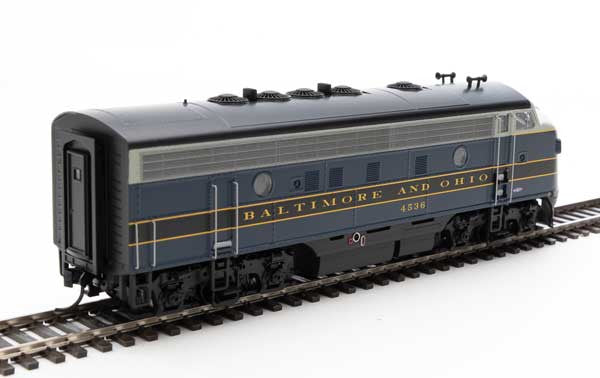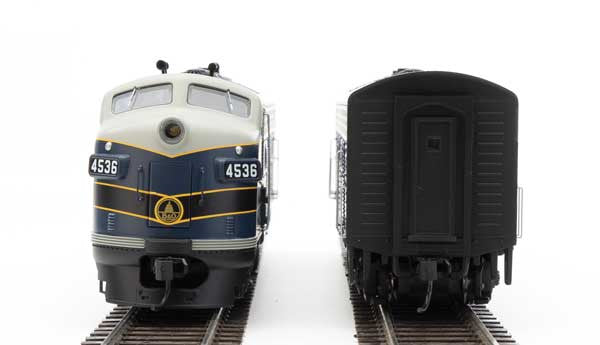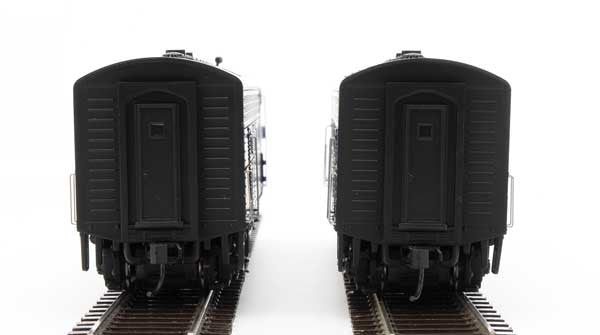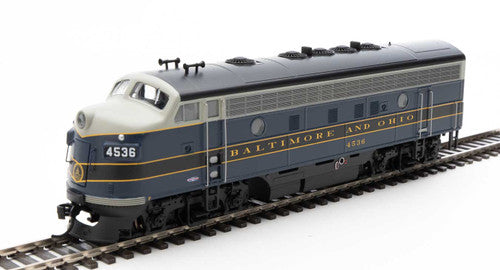Add classic diesel power to your HO scale model train roster quickly with WalthersMainline F7 diesels! These locomotives were introduced in 1949 when railroads started dieselizing rapidly. They were great for both freight and passenger service and were available in various color schemes for almost every American railroad, many of which were in service until the 1980s. Here are the features of WalthersMainline F7 locomotives:
- Limited quantity! These specific road numbers are a one - time run, so order now.
- They were prototypes used in freight and passenger service from 1949 to the 1980s.
- They have colorful paint and lettering.
- Handrails are factory - installed.
- Available with ESU Sound for DCC and DC layouts: 4 function outputs with brightness control, fully DCC compatible, 14, 28, 128 speed steps, dual - mode DC and DCC, 4 changeable air horns, 2 changeable bells, full 8 - notch prime mover sounds, compressor, dynamic brake, and multiple realistic lighting effects.
- They have the same powerful drive as WalthersProto(R) locos: five - pole skew - wound motor, 14:1 gear ratio, helical - cut gears for quiet multiple - unit operation, all - wheel drive and electrical pickup, dual machined brass flywheels, and a heavy die - cast metal chassis.
- They come with an LED Mars Light (upper) and headlight (lower).
- Standard DC models have a 21 - pin plug for easy DCC conversion.
- They have correct size RP - 25 metal wheels and Proto MAX(TM) metal knuckle couplers.
Please note: When operating Walthers - branded DCC - equipped locomotives in DC mode, don't use power packs over 18V, like MRC 1300 - series power packs which have issues with our decoders. You can program alternate horns and bell sounds on the sound decoder using these CVs: Horns - CV163 = 0 (Leslie A - 200), CV163 = 1 (Wabco Single Chime), CV163 = 2 (Nathan M3), CV163 = 3 (Leslie S3L); Bells - CV164 = 0 (Bronze Bell, default), CV164 = 1 (Steel Bell).






Using your Walthers EMD F7 A/B locomotive is easy. First, make sure you choose the right power pack. If you're using it in DC mode, don't use a power pack that has a rating over 18V to avoid decoder issues. Connect the locomotive to your layout and start it up. You can control the speed and functions according to the DCC or DC system you're using. For the sound features, you can program different horn and bell sounds using the CVs mentioned in the product description. When it comes to maintenance, keep the locomotive clean. You can use a soft, dry cloth to wipe away dust. Check the wheels regularly for any debris or wear. If you notice any problems with the drive system or the sound function, it's best to contact customer service. Also, store the locomotive in a dry and safe place to prevent damage.